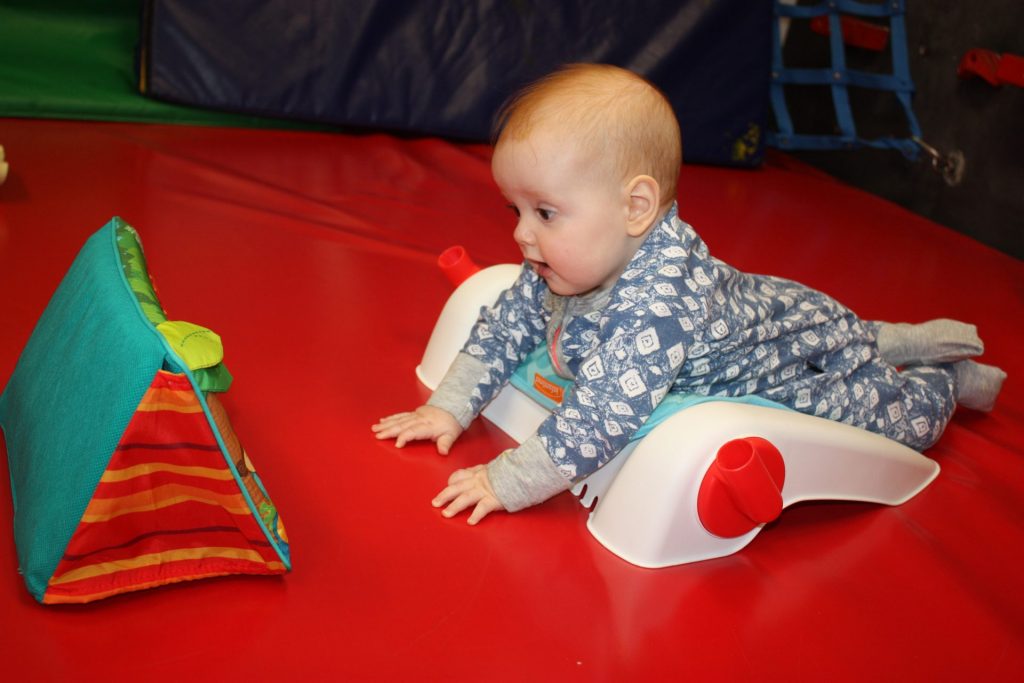Let’s start with:
Brain
- Cognitive development
- Aware of environment
- Sensory integration
Head
Helps prevent flat head (plagiocephaly).
Eyes
- Visual-motor perception
- Depth perception
- Allows follow through 180 degrees
- Looking up
Neck
- Strengthens neck muscles
- Improves head control
- Develops balance reactions
Arms
- Strengthens arms for crawling
- Allows the feeling of change in weight in preparation for rolling/crawling
- Eye-hand regard to reach for toys
Hands
- Sensory experiences/touch
- Strengthening of muscles in hands and fingers
- Develops arches in hands for play (fine motor skills)
Back
- Strength
- Alignment of spine
- Posture – development of curves in lower/upper back
Hips
- Stretches hips – babies go from being in curled up position to straight
- Develops bottom muscles for standing
- Brings legs under body ready to push up to crawl
Legs
- Stretch muscles
- Develop strength for crawling
- Practice kicking and ease movement
- Joint knowledge of knees, hips, and feet
Feet
- Sensation through the front of the foot and toes
- Strengthening of arches in the foot
- Helps integrate early reflexes in the foot
Questions we are asked about tummy time:
What is tummy time?
Tummy time is the time your baby spends playing on their tummy. It’s not just a position.
When should my baby start tummy time?
- As soon as they are born.
- Skin to skin on your chest is your baby’s first tummy time, followed by cuddles on your lap.
- Introduce tummy time on the floor from when you go home from the hospital.
How often should my baby do tummy time?
- Several times a day.
- For small periods of time initially.
How long should my baby do tummy time?
- As much as they and you can fit in during the day.
- An hour a day for under 3 months.
- For most of their awake time until they begin to crawl.
Why should my baby do tummy time?
- To develop sensory, motor, and visual skills.
- To strengthen all muscles of their body.
- To prevent positional conditions (e.g. flat head).
Ideas for tummy time
- Over a travel pillow
- Over a rolled towel
- On a wedge
- In front of a mirror
- Over knees on your lap
- On chest of carer
- On a big ball
- Carrying on tummy
- Rolling on/off their tummy as a game
- During nappy change time
- Both of you doing tummy time so they can copy you

Remember – tummy time must always be done when your baby is awake. If done over equipment, please make sure to supervise. If using an exercise ball, make sure it can’t roll away from you. You can make a pool noodle ring to stabilise an exercise ball and keep it from rolling away.
For more info on tummy time, please see our original blog or Raising Children.
Keep safe, happy, and well,
Deb




